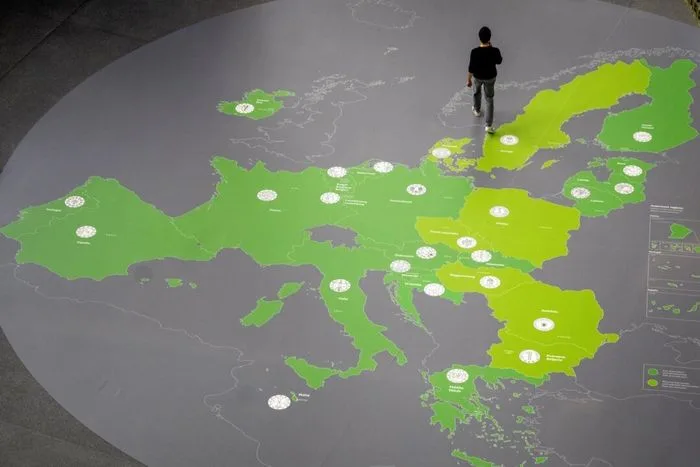By Tom Ozimek
The euro area’s economy barely grew in the second quarter of 2025, underscoring weak momentum across the 20‑nation bloc, while the United States posted a sharp rebound over the same period.
Eurostat said on July 30 that seasonally adjusted GDP in the eurozone rose by 0.1 percent from the previous quarter, while output in the wider 27‑member European Union (EU) gained 0.2 percent. Both readings marked a steep slowdown from the first quarter, when growth reached 0.6 percent and 0.5 percent, respectively.
Among major economies, Spain led with 0.7 percent growth, followed by France at 0.3 percent. Germany and Italy each contracted by 0.1 percent, highlighting persistent divergence within the bloc.
Across the Atlantic, U.S. data showed a far brighter picture. The Bureau of Economic Analysis reported that U.S. GDP surged by 3 percent on an annualized basis in April–June, reversing a 0.5 percent contraction in the first quarter and topping economists’ expectations of 2.4 percent. The rebound was driven by a 30 percent drop in imports—a reversal of earlier tariff‑related stockpiling—and a 1.4 percent rise in consumer spending.
The United States and the EU recently struck a trade agreement that reduced immediate tensions but imposed 15 percent tariffs on EU exports to the U.S. market—a measure likely to weigh on eurozone growth. The deal has yet to be ratified by EU members, and unresolved details mean that European firms may remain hesitant to invest.
Meanwhile, the International Monetary Fund (IMF) on Tuesday nudged up its full-year growth forecast for the euro area, citing stronger‑than‑expected first‑quarter activity, mostly due to a surge in Irish pharmaceutical exports. However, the fund warned that broader euro area demand remains subdued and that risks from tariffs and fiscal strains persist.
In its July World Economic Outlook update, the IMF projected that euro area GDP would grow by 1 percent in 2025 and by 1.2 percent in 2026, an upgrade of 0.2 percentage points for 2025 from April’s forecast. The revision reflects what the fund called a “historically large” jump in Irish pharmaceutical shipments to the United States following trade front‑loading and new production facilities. Without Ireland’s contribution, the euro area upgrade would have been just 0.1 points.
The IMF expects euro area inflation to stay muted relative to the United States, helped by currency appreciation and temporary fiscal measures. For the broader EU, growth is forecast at 1.3 percent in 2025 and 1.4 percent in 2026, roughly unchanged from April.
In a recent statement following its annual consultation with the euro area, the IMF said the region faces structural challenges that constrain medium‑term prospects and urged governments to rebuild fiscal buffers, protect central bank independence, and pursue reforms to boost productivity.
“Risks to growth are on the downside,” the IMF warned, citing potential tariff escalation, geopolitical tensions, and fiscal strains that could overshadow any benefits from unexpected fiscal easing.
The IMF also upgraded its U.S. growth forecast to 1.9 percent for 2025 and 2 percent for 2026, citing lower‑than‑expected tariffs, a weaker dollar, and corporate investment incentives from the One Big Beautiful Bill Act. Globally, it lifted its 2025 growth forecast to 3 percent from 2.8 percent in April, while cautioning that high trade barriers and geopolitical shocks still pose significant risks.
“Persistent uncertainty may weigh on investment, while geopolitical tensions and fiscal vulnerabilities pose additional threats,” IMF Chief Economist Pierre‑Olivier Gourinchas said, adding that breakthroughs in trade talks could boost confidence while structural reforms could lift long‑term productivity.






